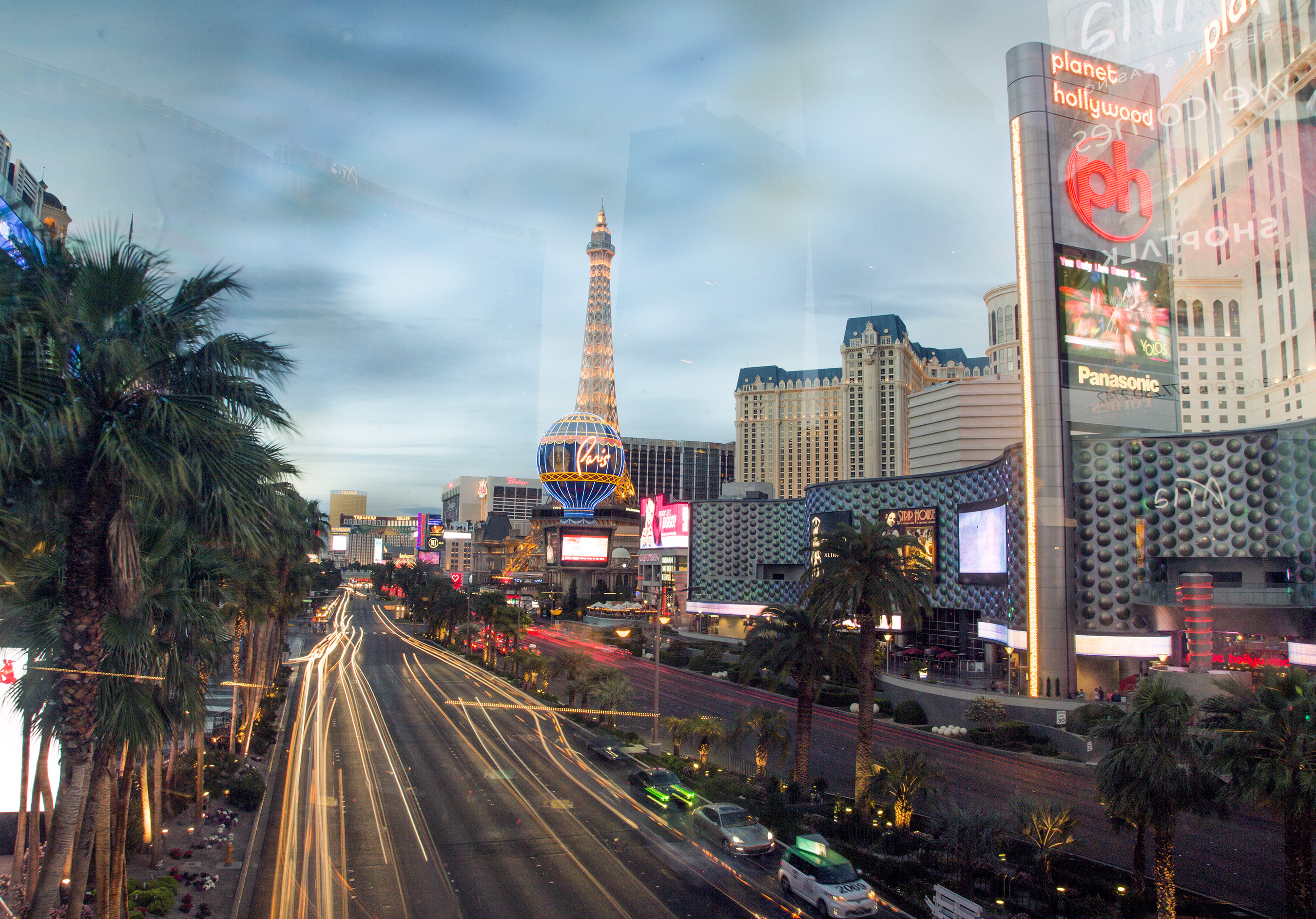As Nevada slowly reopens, gaming comeback could be a long road

Eliminating 276,300 gaming and tourism jobs in the weeks following the unprecedented shutdown of Nevada’s casino industry on March 18 was a painful process.
Now comes an even more challenging dilemma for casino operators — how many employees are brought back initially under COVID-19 health and safety guidelines established by Nevada gaming regulators last week? Also, how quickly does a property “ramp up” and increase staffing, and how long does this “new normal” last?
Two months after the closures to slow the spread of the coronavirus pandemic, Nevada’s gaming industry is eyeing a return to operations, potentially by the end of May or in early June. But casino leaders have said it will be a slow process. Companies with multiple properties have said they will reopen just portions of certain resorts initially while other casinos will remain shuttered until business levels show a marked return.
For example, MGM Resorts International will open New York-New York and Bellagio, leaving 11 other Strip properties closed. Station Casinos will initially reopen the majority of its locals market, but keep four other properties, including the Palms, sidelined. Boyd Gaming said it would reopen its nine Las Vegas locals properties but is taking a wait and see approach on its three downtown Las Vegas casinos.
“Casinos and suppliers will not reopen at the same staffing levels, and the return of the workforce will be phased for the safety of customers, vendors, and employees,” said Jennifer Martinez, CEO of Consult HR Partners who has held various human resources management positions for casino operators and gaming equipment providers.
Martinez, one of three human resources consultants with gaming industry experience who talked with The Nevada Independent about casino employment issues, said the phased-in reopening of the Strip and locals casino markets will result in at least a temporary reduction to the workforce that may later become permanent.
“Operators and suppliers are prioritizing the work areas to re-open initially and the positions needed for each phase thereafter,” said Martinez, who advises both gaming and non-gaming clients. “For example, security and safety, housekeeping, and custodial workers following new procedures may return at the same staffing levels or higher, whereas positions such as event planner or buffet greeter may be hired back in a later phase.”
Casino staffing levels may be dictated by some of the Gaming Control Board’s guidelines, such as occupancy restrictions that limit resorts to no more than 50 percent their maximum capacity, social distancing measures throughout the public areas, including restaurants, and increasing space between slot machines while reducing the number of seats at table games.
“Overall staffing will be hugely dependent on occupancy,” said Michelle DiTondo, a principal at Avion Consulting. “Operationally, it will take time for casinos to ramp up. You can’t bring back staffing levels all at once. And when you bring employees back, they want to feel safe. Managers and property leaders are thinking this through.”
Kim Virtuoso, CEO of All In Leadership, said a reduction in gaming workforce will be temporary, simply because of supply and demand. However, she advised that bringing back employees will be “slow and steady” and only when there is a “thriving tourism base and high demand.”
However, she cited analysts who are predicting a slow growth pace in 2021 while saying it may take until 2023 for the gaming industry to return to pre-pandemic levels.
“Many companies are also creatively shifting their models, such as mandating no overtime, freezing hiring of open positions, and analyzing the current arrangements of bonus award structures,” Virtuoso said. “These business model changes reflect cost-cutting measures until revenue and travel can stabilize again in the future.”
Long revenue recovery ahead
Nevada’s casino industry produced $12.03 billion in gaming revenues in 2019, the third largest mark in history and the first time in 12 years the state reached or exceeded the $12 billion single-year milestone. Nevada casinos topped $1 billion in gaming revenues in January and February before the COVID-19 shutdowns. Following March’s 40 percent decline, analysts predicted it could take a year or longer before the state sees a billion-dollar gaming revenue month.
In fiscal 2019, Nevada casinos produced combined revenues – gaming and non-gaming – of more than $24.5 billion, according to the Gaming Control Board.
When casinos closed, Las Vegas research firm Applied Analysis – in a study for the Nevada Resort Association – said gaming and tourism directly employs 276,300 workers. However, when supporting positions are considered, gaming and tourism accounts for 450,000 jobs – one out of every three jobs in Nevada.
Applied Analysis said gaming and tourism supports $20 billion in wages and salaries annually, while generating $75 billion of yearly economic production, or roughly 45 percent of the state’s aggregate output.
Employment in Nevada’s casino industry has been upended twice in the last two decades. The terrorist attacks on Sept. 11, 2001 caused travel disruptions across the U.S. for nearly a year that slowed Las Vegas visitation. And the Great Recession that began in 2008 slowed the gaming business for several years.
But nothing can match the closure of every casino in Nevada – large and small – which sent nearly an entire industry workforce to the unemployment rolls while wondering whether jobs would still be there in the months ahead, as the pandemic lingers.
Martinez said the casino workforce has anxieties similar to the general public about going back into a casino.
“Employees are concerned about the safety measures, including personal protective equipment and training, that their company will implement to keep them healthy and safe from the virus,” Martinez said. “It will also depend on the economic situation of the employee and their personal comfort level with returning to work without a vaccine or proven treatments available at this time.”
Furloughs versus layoffs
With revenues drying up, most casino companies had furloughed their workforces by the end of March, keeping only a handful of management and hourly employees on staff so that shuttered properties remained somewhat operational.
Virtuoso explained that “furlough” is an employment term that is generally defined as a temporary leave of absence without pay, primarily caused by “exigent circumstances.” COVID-19 fits the definition.
“Furloughed employees are not typically paid for time not worked but remain employed and maintain benefit eligibility subject to the terms of the employer's benefit plans,” Virtuoso said. “Employees placed on furloughs may seek unemployment benefits.”
DiTondo said keeping employees on furlough status makes the rehiring process much easier and quicker to manage. Furloughs also reduce the need for lengthy background checks.
“You don’t have a long process. It’s just a matter of changing a person’s status,” she said.
Casino operators took different approaches with their workforces.
Boyd Gaming, which operates 29 gaming properties in 10 states, paid employees through April 10 before furloughing most of its 25,000-person nationwide workforce.
Las Vegas Sands and Wynn Resorts are the only casino companies that have kept their workforce on the payroll since the middle of March. Wynn executives said last week the company will have spent $250 million in payroll over 75 days for 15,000 workers without an operating property in Las Vegas or Boston.
“We have invested heavily in our culture,” CEO Matt Maddox said last week. “You can quickly disrupt a culture that takes years and years to build.”
Meanwhile, several companies took steps to lay off large portions of their workforce, most notably MGM Resorts. The company furloughed 63,000 employees across eight states last month. Last week, MGM acting CEO Bill Hornbuckle said the company would institute layoffs under the Worker Adjustment and Retraining Notification (WARN) Act, which requires employers to provide a minimum of 60-day notice prior to a mass layoff.
“Based on the current situation, we now believe that some of our colleagues may not return to work this year,” Hornbuckle wrote in a letter. “And, given the continued uncertainty facing our industry, we simply don’t know just how many employees will return to work within the coming months.”
In a separate statement, the company said, “While we’re hopeful that our industry’s recovery will be swift, we now believe that it may take some time for business to return to pre-pandemic levels. We’re committed to being as transparent with our employees as possible, so they can plan accordingly and do what is best for themselves and their families.”
Station Casinos, which had committed to paying its 14,000-person workforce through May 16, said on May 2 it would lay off 39 percent of the company’s full time employees – roughly 5,400 workers – on that day.
In a March 25 letter obtained by the Reno Gazette-Journal, Treasure Island, which is owned by billionaire Phil Ruffin, told the Nevada Department of Employment it had furloughed 2,225 employees and said the action might trigger a WARN Act notification. Treasure Island is accepting room reservations starting May 22, even though it’s unclear whether the property will be able to open.
Employment consultants say they won’t be surprised if other casino companies implement layoffs.
Virtuoso, who spent several years as an MGM human resources executive, said gaming companies have spent the last seven weeks analyzing bottom lines, cash flow projections, and the forecast for future customer spending and tourism habits. She called the numbers “staggering.”
Pending actions depend on when Gov. Steve Sisolak allows casinos to reopen.
“Many (casino) leaders were hopeful to be able to re-open and return employees mid-May and into early June; however, there was a halt on that plan, and it required them to quickly shift their business models and plans this last week, resulting in additional layoffs,” Virtuoso said.
Martinez said employee-related expenses are among the highest operating expenses in any company regardless of industry.
“Casinos will continue to manage cost control in the most effective ways possible,” she said.
PPE usage
In recently released health and safety guidelines, the Gaming Control Board said casinos are to follow state and medical requirements for the usage of medical masks and other personal protective equipment and should make the items available for resort guests and employees. Regulators are leaving it up to the casino to decide whether masks will be required.
Virtuoso said it will be important for resort executives to communicate changing policies, procedures, and guidelines that have been newly implemented, especially any enhanced precautions such as temperature checks, gloves, masks, facial shields and additional safeguards throughout the properties.
“Although the environment may look different, customer service, hospitality, and service excellence are the lifeblood of Las Vegas and will be at the forefront of new procedures,” she said.
Martinez said she would encourage casino operators to let employees use masks and PPE if it helps workers feel more comfortable, noting that the use might also support customer confidence.
Howard Stutz is a freelance gaming reporter for The Nevada Independent and the executive editor of CDC Gaming Reports. He has been a Nevada journalist for 30 years. He can be reached at [email protected]. On Twitter: @howardstutz
